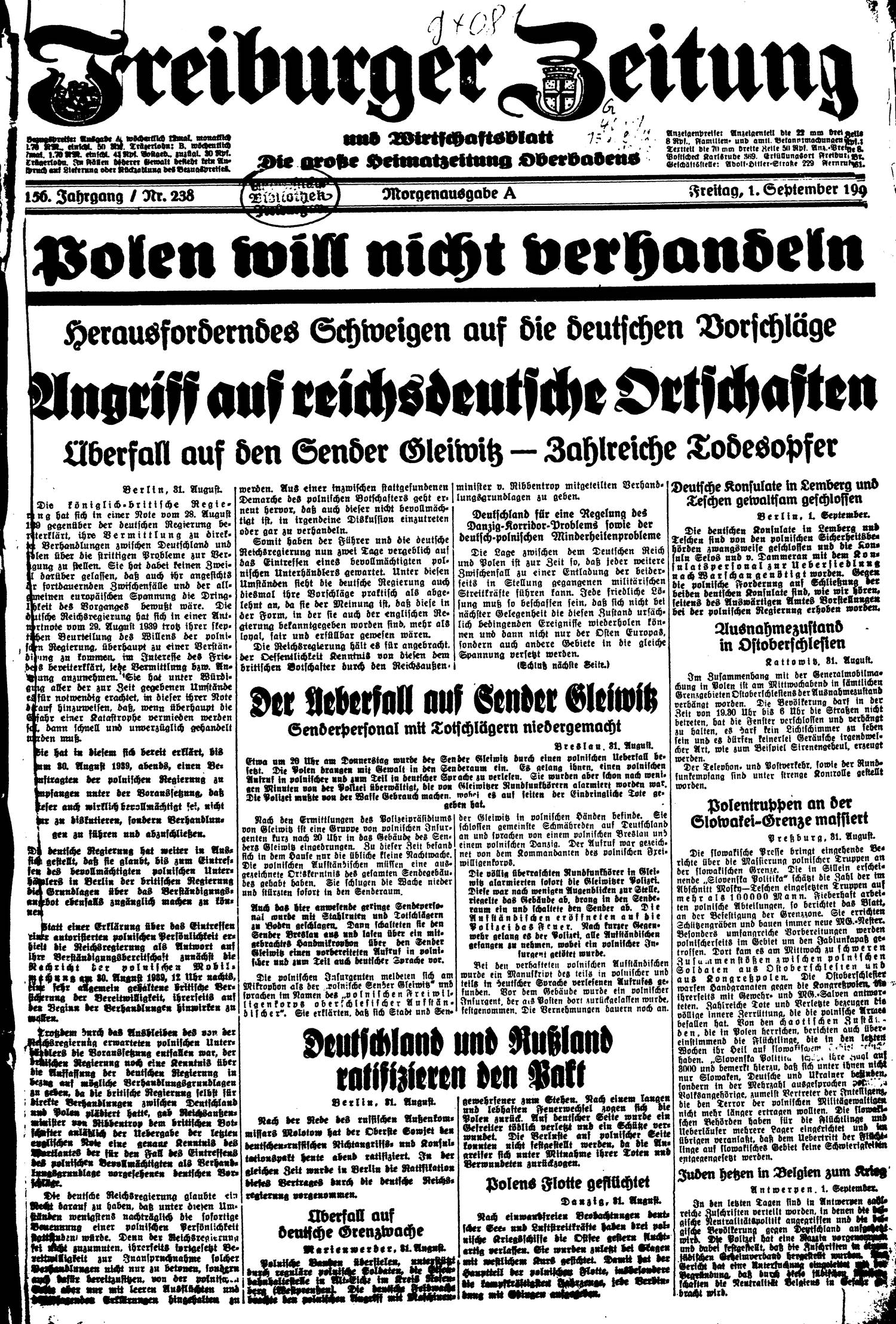I now offer in evidence Document 2751-PS, which is Exhibit USA-482. It is an affidavit of Alfred Helmut Naujocks, dated November 20, 1945. This affidavit particularly refers to the actual occurrences in connection with the Polish border incident. I believe it was referred to by the Witness Lahousen when he was on the stand:
"I, Alfred Helmut Naujocks, being first duly sworn, depose and state as follows:
"1. I was a member of the SS from 1931 to 19 October 1944 and a member of the SD from its creation in 1934 to January 1941. I served as a member of the Waffen-SS from February 1941 until the middle of 1942. Later I served in the Economics Department of the Military Administration of Belgium from September 1942 to September 1944. I surrendered to the Allies on 19 October 1944.
"2. On or about 10 August 1939 the Chief of the Sipo and SD, Heydrich, personally ordered me to simulate an attack on the radio station near Gleiwitz, near the Polish border, and to make it appear that the attacking force consisted of
242
20 Dec. 45
Poles. Heydrich said: 'Actual proof of these attacks of the Poles is needed for the foreign press, as well as for German propaganda purposes.' I was directed to go to Gleiwitz with five or six SD men and wait there until I received a code word from Heydrich indicating that the attack should take place. My instructions were to seize the radio station and to hold it long enough to permit a Polish-speaking German, who would be put at my disposal, to broadcast a speech in Polish. Heydrich told me that this speech should state that the time had come for the conflict between the Germans and the Poles and that the Poles should get together and strike down any Germans from whom they met resistance. Heydrich also told me at this time that he expected an attack on Poland by Germany in a few days.
"3. I went to Gleiwitz and waited there a fortnight. Then I requested permission of Heydrich to return to Berlin but was told to stay in Gleiwitz. Between the 25th and 31st of August I went to see Heinrich Muller, head of the Gestapo, who was then nearby at Oppeln. In my presence Muller discussed with a man named Mehlhorn plans for another border incident, in which it should be made to appear that Polish soldiers were attacking German troops .... Germans in the approximate strength of a company were to be used. Muller stated that he had 12 or 13 condemned criminals who were to be dressed in Polish uniforms and left dead on the ground at the scene of the incident to show that they had been killed while attacking. For this purpose they were to be given fatal injections by a doctor employed by Heydrich. Then they were also to be given gunshot wounds. After the assault members of the press and other persons were to be taken to the spot of the incident. A police report was subsequently to be prepared.
"4. Muller told me that he had an order from Heydrich to make one of those criminals available to me for the action at Gleiwitz. The code name by which he referred to these criminals was 'Canned Goods.'
"5. The incident at Gleiwitz in which I participated was carried out on the evening preceding the German attack on Poland. As I recalls war broke out on the 1st of September 1939. At noon on the 31st of August I received by telephone from Heydrich the code word for the attack which was to take place at 8 o'clock that evening. Heydrich said, 'In order to carry out this attack, report to Muller for "Canned Goods."' I did this and gave Muller instructions to deliver the man near the radio station. I received this man and had
243
20 Dec. 45
him laid down at the entrance to the station. He was alive, but he was completely unconscious. I tried to open his eyes. I could not recognize by his eyes that he was alive, only by his breathing. I did not see the shot wounds, but a lot of blood was smeared across his face. He was in civilian clothes.
"6. We seized the radio station as ordered, broadcast a speech of 3 to 4 minutes over an emergency transmitter, fired some pistol shots, and left."
And then "sworn to and subscribed to before Lieutenant Martin".
http://avalon.law.yale.edu/imt/12-20-45.asp



